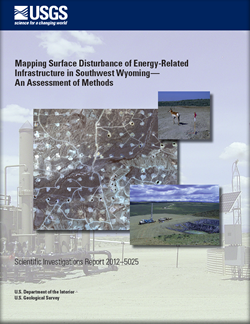 Abstract Abstract
We evaluated how well three leading information-extraction software programs (eCognition, Feature Analyst, Feature Extraction) and manual hand digitization interpreted information from remotely sensed imagery of a visually complex gas field in Wyoming. Specifically, we compared how each mapped the area of and classified the disturbance features present on each of three remotely sensed images, including 30-meter-resolution Landsat, 10-meter-resolution SPOT (Satellite Pour l'Observation de la Terre), and 0.6-meter resolution pan-sharpened QuickBird scenes. Feature Extraction mapped the spatial area of disturbance features most accurately on the Landsat and QuickBird imagery, while hand digitization was most accurate on the SPOT imagery. Footprint non-overlap error was smallest on the Feature Analyst map of the Landsat imagery, the hand digitization map of the SPOT imagery, and the Feature Extraction map of the QuickBird imagery. When evaluating feature classification success against a set of ground-truthed control points, Feature Analyst, Feature Extraction, and hand digitization classified features with similar success on the QuickBird and SPOT imagery, while eCognition classified features poorly relative to the other methods. All maps derived from Landsat imagery classified disturbance features poorly. Using the hand digitized QuickBird data as a reference and making pixel-by-pixel comparisons, Feature Extraction classified features best overall on the QuickBird imagery, and Feature Analyst classified features best overall on the SPOT and Landsat imagery. Based on the entire suite of tasks we evaluated, Feature Extraction performed best overall on the Landsat and QuickBird imagery, while hand digitization performed best overall on the SPOT imagery, and eCognition performed worst overall on all three images. Error rates for both area measurements and feature classification were prohibitively high on Landsat imagery, while QuickBird was time and cost prohibitive for mapping large spatial extents. The SPOT imagery produced map products that were far more accurate than Landsat and did so at a far lower cost than QuickBird imagery. Consideration of degree of map accuracy required, costs associated with image acquisition, software, operator and computation time, and tradeoffs in the form of spatial extent versus resolution should all be considered when evaluating which combination of imagery and information-extraction method might best serve any given land use mapping project. When resources permit, attaining imagery that supports the highest classification and measurement accuracy possible is recommended.
|
First posted May 10, 2012
This report is presented in Portable Document Format (PDF); the latest version of Adobe Reader or similar software is required to view it. Download the latest version of Adobe Reader, free of charge. |